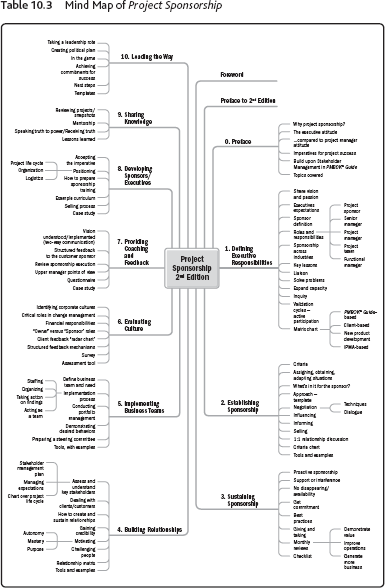Appendix
Chapter 1
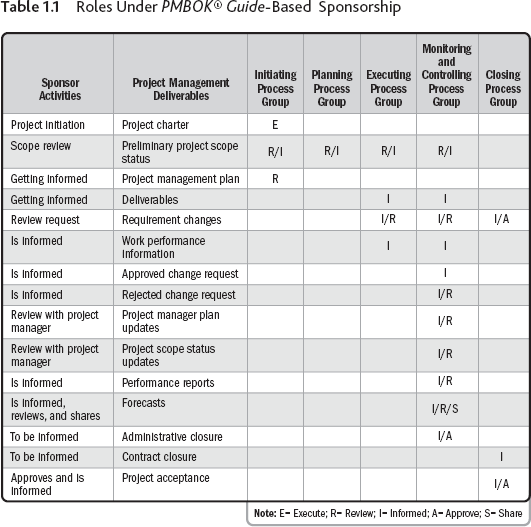
Table 1.2 Questions to Answer When Contemplating Client-Based Sponsorship
Understanding the Client
|
Pursuing the Deal
|
Understanding the Deal
|
Fitness to Compete
|
Influencing the Solution
|
Positioning to Win
|
Understanding the Provider Profit and Risk
|
Resources
|
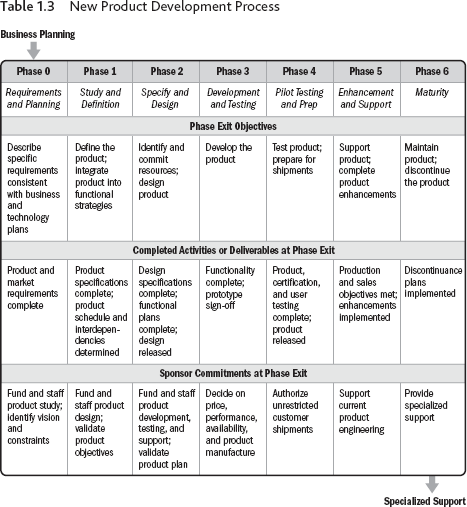

Chapter 2
Table 2.1 Sponsor Influence Assessment
| Please score yourself in the following assessment from 1 to 5 (1 is the minimum, and 5 is the maximum). | |
| Question | Scoring (1–5) |
| 1. Are you getting decisions made? | |
| 2. Are other people seeking you out for advice to accomplish the most essential tasks and to make important decisions? | |
| 3. Are you able to create alliances across business units, developing support? | |
| 4. Does your credibility and respect as a project sponsor get people to embrace your ideas and want to be part of what you are doing? | |
| 5. Do you have allies who support your ideas and help you accomplish the tasks that are deemed important? | |
| 6. Do you sway decisions to your desired state because when you speak, people listen to what you have to say? | |
| 7. People know they can depend on you to influence decisions and change outcomes for the better. | |
| 8. You have established mutual respect with people above you who want to hear and seek out your opinions, ideas, and insights. | |
| 9. You are able to get others to take on activities that affect the organization and positively impact bottom-line results. | |
| 10. You know how to create a committed and excited workforce who are engaged in projects or activities you are influencing. | |
| Please have a look at the meaning of your scoring results: | |
| Scoring | Meaning |
| 50–46 | You are a very good influencer. You are the greatest because you think you are. |
| 45–35 | You have good influence skills and understand what it will take to improve. Go for it! |
| 34–20 | You are in the big club of people who think they have good influence skills, but do not. You are in need of skill-building help and need to actively work on influence exercises every day. |
| 19–5 | Read this book carefully. You can improve, share, and learn to move forward. |
Chapter 3
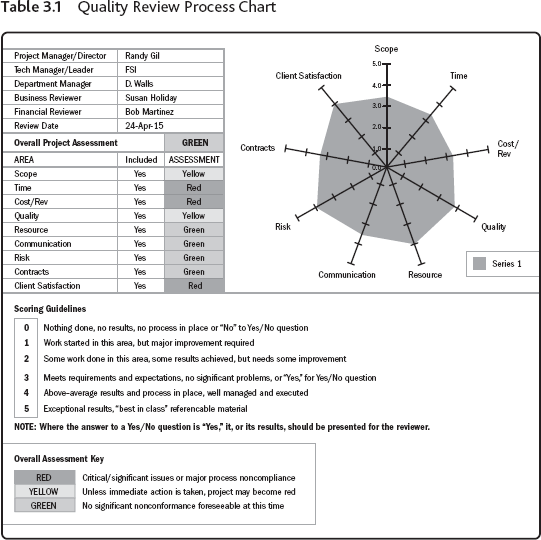
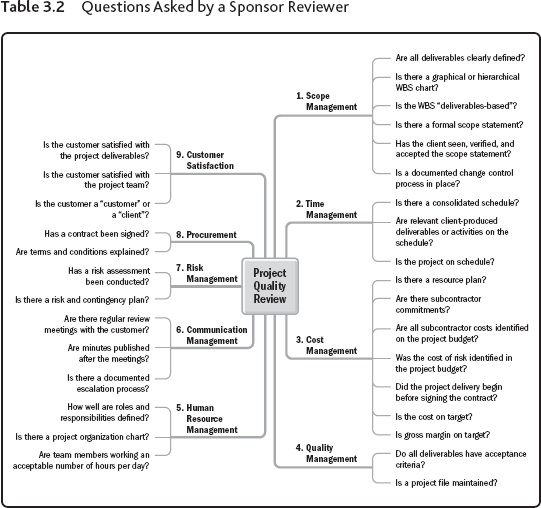
Table 3.3 Six Characteristics of Strong Sponsorship
| Characteristic | Definition | Sponsor Actions |
| Power | The authority to legitimize the project within the organization | Acquires and deploys the necessary resources |
| Sense of urgency | The compelling project needs to transform elements of the business system in a timely manner | Overcomes all obstacles to achieve the desired state |
| Vision | A clear, tangible, and accessible description of the desired state | Creates an active dialogue about the desired state with all constituencies |
| Public role | Public communication and reinforcement of all aspects of the transformation | Discusses and reinforces the need to achieve the desired state during public and visible day-to-day activities |
| Private role | Private communication and reinforcement of all aspects of the project | Meets with key individuals to discuss the need for the project and reinforces the role that each individual must play |
| Leverage | Use of consequences, both rewards and punishments, to reinforce the new behaviors associated with the desired state | Rewards (or punishes) individuals and constituencies throughout the project process for behavior or activity that is consistent (or inconsistent) with the desired state, as appropriate |
Chapter 4
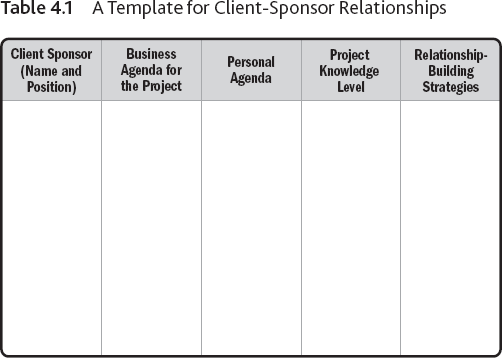
Table 4.2 7 Steps to Stronger Relationships Between Project Managers and Sponsors (PM Network, September 2014, pp. 50–55)
7 Steps to Stronger Relationships Between Project Managers and Sponsors (PM Network®, September 2014, pp. 50–55)
1. Talk Early and Often
“Just as you would do for a kickoff meeting for a project, it's important to do a kickoff meeting for the project manager-sponsor relationship…both parties should outline what they understand their roles to be.”
– Paul Dinsmore, Dinsmore-Compass Consulting, Rio de Janeiro, Brazil
“It's essential that the project manager and project sponsor have at least a half hour booked very month.”
– Vicki James, Professional Project Services, Seattle, Washington, USA
2. Make It Personal
“Those early friendly conversations build a rapport that makes working together easier.”
– Paul Dinsmore
“Look for areas of commonality. See if there's something you can glean that you can build a relationship upon or at least ask questions about.”
– Vicki James
3. Build the Team Together
“Even the sponsor can change mid-project. When that happens, the project manager must form a bridge between the old sponsor and the new one, says Sakshee Kohli, PMP, program manager, ANZ Bank, Melbourne, Australia.”
4. Speak the Same Language
“Just as a doctor might need to translate medical terms for a patient, a project manager can help the sponsor understand things like earned value analysis and critical path—all those terms project managers take for granted.”
– David West, WSP, London, England
5. Help Me Help You
“Most project managers are independent individuals and assume they should try to handle problems themselves…Sometimes they don't realize that the sponsor's role is to help, particularly in situations that are political in nature…The best thing a sponsor can do is say ‘Hey, if you need help convincing so-and-so, I know him well and we can work together on this.’”
– Paul Dinsmore
6. Anticipate Surprises
“Sponsors should try to avoid surprising project managers with scope creep…[Project managers] should never keep bad news to themselves—especially if negative developments call into question the project's strategic value.”
7. Stay in Your Lane
“Micromanaging is ‘the cardinal sin of project sponsorship,’ says Mr. Dinsmore. When both parties do the work of building trust, outlining roles and responsibilities, and communicating regularly, micromanagement shouldn't be an issue. ‘Presumably, the right project manager has been assigned to the project, so the project sponsor has to trust that that person will do the job.’”
“So, as a project manager, you have to ask yourself: Are they [the sponsors] really micromanaging: Why are they making this request? In the scheme of things, it might not be so bad.”
– Vicki James
Chapter 5
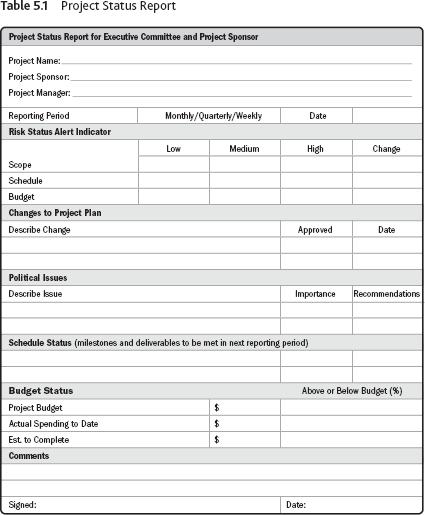
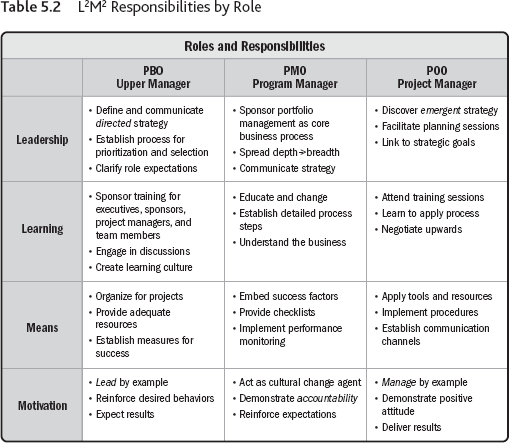
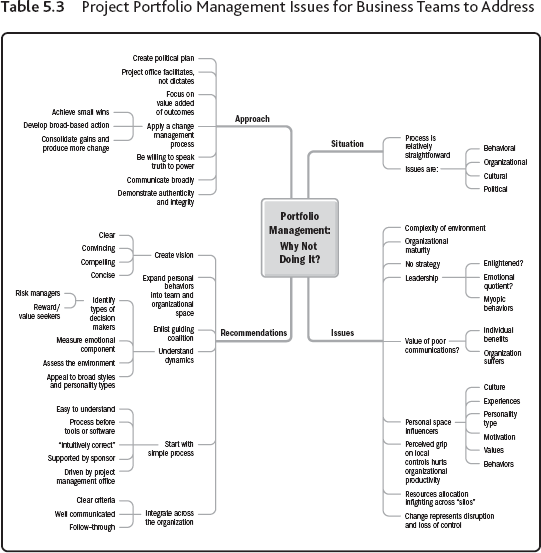
Chapter 6
Table 6.1 Sponsor Evaluation Tool
The purpose of this evaluation is to measure how well the sponsor supports project management in your organization. The following questions refer to your current project.
If you are not now working on a project, or if your current project has just begun and you feel you cannot answer the questions appropriately, then refer to the last project you worked on when answering these questions. If you are an upper manager, think of the project or projects with which you are most closely associated.
Rate each statement using any number from a low of 1 to a high of 7. Use the following guidelines:
“1” means the statement is true to an extremely small extent, never, or not at all.
“4” means it is true to an average extent, or about normal in degree or frequency.
“7” means it is true to an extremely large extent, always, or without fail.
| 1. | The sponsor's goals for the project are clear. | |
| 2. | The sponsor believes there is a real need for the project. | |
| 3. | The sponsor understands how many people or groups will be affected by the project. | |
| 4. | The sponsor understands what resources are needed for the project to be successful. | |
| 5. | The sponsor is willing to commit the resources needed for the project to succeed. | |
| 6. | The sponsor publicly conveys the organization's strong commitment to the project and its desired outcomes. | |
| 7. | The sponsor uses appropriate rewards and pressures to gain support for the project. | |
| 8. | The sponsor ensures that procedures to track progress and problems are established. | |
| 9. | The sponsor is aware of all commitments that are required for the project to succeed. | |
| 10. | The sponsor shows consistent, sustained support for the project. | |
| Sponsor Factor Total (70-point scale) 10–29 High Risk/Danger 30–49 Moderate/Caution 50–70 Low Risk/Opportunity |
||
Success Assessment
While the purpose of the survey is to measure how well sponsors support project management in your organization, the ultimate benefit being sought is for each project to be successful and contribute value to the organization. The goal of capturing benchmarking data is to correlate component factors with project success.
Assess how well this project has succeeded or has the potential to succeed if it is currently in process.
Use these criteria:
1. Project did not accomplish any of its objectives.
2. Project met only one of its objectives.
3. Project met some of its objectives.
4. Project satisfied the triple constraints of scope, schedule, and resources.
5. Project fully satisfied customer, user, or client requirements.
6. Over time the project contributed significant value, exceeding expectations.
7. Project met or exceeded key stakeholder requirements and contributed value and benefits far in excess of its costs.
The project was a complete success (pick one):
1. Strongly Disagree
2. Disagree
3. Somewhat Disagree
4. Neutral
5. Somewhat Agree
6. Agree
7. Strongly Agree
Success Score: ![]()
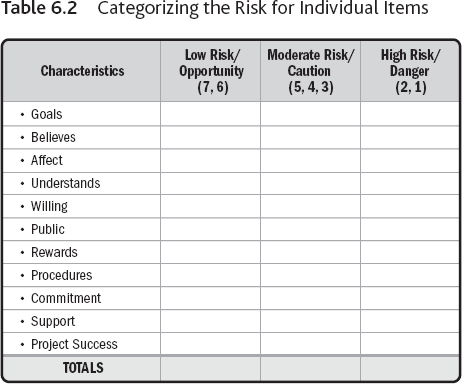
Table 6.3 Sponsor Evaluation Benchmark Comparisons
| Question | Benchmark Scores | My Scores |
| • Goals | 5.3 | |
| • Believes | 6.1 | |
| • Affect | 4.8 | |
| • Understands | 4.3 | |
| • Willing | 4.8 | |
| • Public | 5.1 | |
| • Rewards | 4.1 | |
| • Procedures | 4.1 | |
| • Commitment | 4.4 | |
| • Support | 5.1 | |
| TOTAL | 48.1 | |
| Project Success | 5.1 |
Table 6.4 Sponsor Risk Assessment Survey
| Instructions | ||
| The following items reflect the key elements of risk assessment. Each element has a scale from 1 to 5, with a “5” indicating high response to the statement, and a “1” indicating the lowest response. | ||
| 1. Motivation for the Project | SCORE | |
| 1.1 | There is a convincing business need for the project. | ——— |
| 1.2 | There are significant risks to the business if the project is unsuccessful. | ——— |
| 1.3 | The level of dissatisfaction with the current situation is mutually shared by employees and management. | ——— |
| 1.4 | There is a sense of urgency to change felt by everyone. | ——— |
| 1.5 | The extent of the impact on those affected by the project is minimal (work habits, power, security). | ——— |
| TOTAL | ——— | |
| 2. Commitment to the Project | ||
| 2.1 | There is publicly committed sponsorship to the change. | ——— |
| 2.2 | Resources, time and money are committed to sustain the change. | ——— |
| 2.3 | The sponsor is at a high enough level in the organization to have decision making authority. | ——— |
| 2.4 | Those implementing the change are considered credible by those affected by the change. | ——— |
| 2.5 | The sponsor clearly understands his or her responsibility, especially when conflicts arise. | ——— |
| 2.6 | There is a guiding coalition (other leaders supporting the sponsor) to drive the project. | ——— |
| 2.7 | First line managers actively support the change. | ——— |
| TOTAL | ——— | |
| 3. Shared Vision of the Project | SCORE | |
| 3.1 | There is a tight link between the vision for the project and the organization's overall vision. | ——— |
| 3.2 | People can relate the vision for the change to themselves personally in a positive way. | ——— |
| 3.3 | There is a well-articulated vision of the change that is commonly understood and shared by all stakeholders. | ——— |
| 3.4 | There is strong leadership to sustain the vision for the change. | ——— |
| 3.5 | The vision statement is clear, convincing, and compelling. | ——— |
| TOTAL | ——— | |
| 4. Cultural Match with the Project | ||
| 4.1 | The project aligns with the culture of the organization. | ——— |
| 4.2 | The implementation approach is appropriate to the organizational culture. | ——— |
| 4.3 | The strength of the culture is likely to reinforce the change direction. | ——— |
| 4.4 | Previous changes have been handled well in this organization. | ——— |
| 4.5 | Decision making is timely and implemented. | ——— |
| 4.6 | There is a high degree of trust between managers and employees in the areas affected by the change. | ——— |
| TOTAL | ——— | |
| 5. Organizational Alignment | ||
| 5.1 | Planning cycles support project resource requirements. | ——— |
| 5.2 | Reward structures encourage adoption of the change by all affected parties. | ——— |
| 5.3 | Processes support the sustainability of the change. | ——— |
| 5.4 | Consequences are articulated and followed through on. | ——— |
| 5.5 | Management practices and behavior support the change. | ——— |
| 5.6 | There is a manageable level of stress in the organization. | ——— |
| TOTAL | ——— | |
| 6. Communication | ||
| 6.1 | The organization uses three-way communication. | ——— |
| 6.2 | Communication generally reaches and is understood at all levels. | ——— |
| 6.3 | The communication plan is comprehensive and timely. | ——— |
| 6.4 | Multiple media are available for communicating in this organization. | ——— |
| 6.5 | The magnitude of the change is small both vertical and horizontally. | ——— |
| TOTAL | ——— | |
| 7. Transition Planning | ||
| 7.1 | There is a transition plan in place which allows adequate time for the change. | ——— |
| 7.2 | The transition plan is comprehensive, covering people, process, and technical dimensions. | ——— |
| 7.3 | Transition measures are incorporated into the plan. | ——— |
| 7.4 | Potential problems and risks have been identified, and plans are In place for resolving them quickly. | ——— |
| 7.5 | The implementation approach is aligned with the scope of the change (timeframes, methods, degree of involvement). | ——— |
| TOTAL | ——— | |
| 8. Skills | ||
| 8.1 | The change agents have sound skills in implementing the change process. | ——— |
| 8.2 | Those affected by the change have the technical and job skills necessary to perform the new activities. | ——— |
| 8.3 | People understand their personal transitioning process. | ——— |
| 8.4 | There are suitable mentors available to assist people through the change. | ——— |
| 8.5 | Employees have a sense of empowerment that is appropriate to the nature of the change. | ——— |
| 8.6 | Teamwork is highly developed in this organization. | ——— |
| TOTAL | ——— | |
| Scoring Instructions | ||
| 1. | Total the scores for each section (1 through 8). | |
| 2. | Divide the section scores by the factor identified below to create an adjusted score. | |
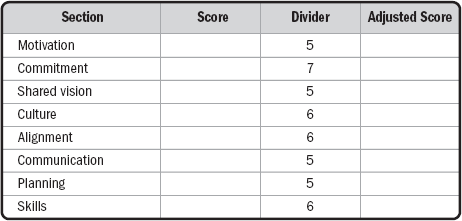 |
||
| 3. | Total of adjusted scores | ——— |
| 4. | Multiply the total adjusted score by 2.5 to obtain an overall risk assessment score | ——— |
| 5. | Mark the range for your overall risk assessment: | ——— |
| High/Danger (20–40) | ——— | |
| Moderate/Caution (41–70) | ——— | |
| Low/Opportunity (71–100) | ——— | |
| 6. | Draw a spider diagram similar to the one below to show the main areas of risk. High scores indicate minimum risk, low scores require risk strategies. | |
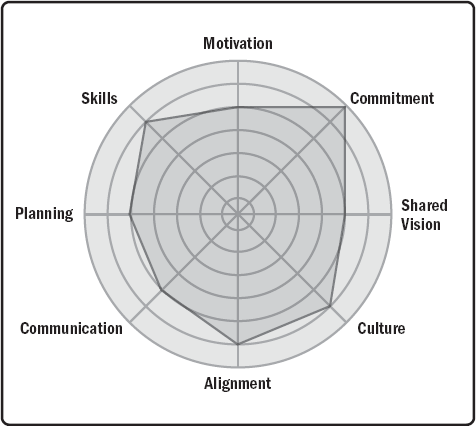
Chapter 7
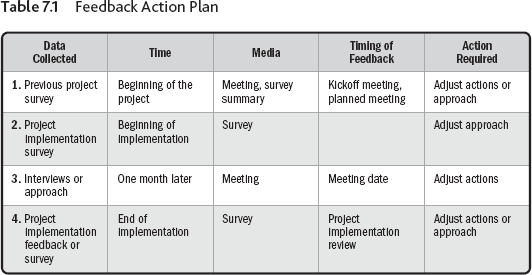
Table 7.2 Feedback Assessment Tool
| Use a scale from 0 (poor) to 7 (excellent) for each element to be scored. | |
| Client project management | |
| Quality and skill set of client team | |
| Availability of needed resources | |
| Clear decision-making processes and responsibilities | |
| Collaboration with provider | |
| Working conditions for provider team | |
| Client sponsorship for project | |
| Climate of innovation | |
Table 7.3 Feedback Questionnaire
| To help focus the feedback, answer each question with a yes or no. | ||
| Questions About the Sponsor | ||
| 1. Has the sponsor participated in all key meetings? | Yes | No |
| 2. Has the sponsor communicated proactively and sold the project across the organization to create buy-in and participation? | Yes | No |
| 3. Did the sponsor support the project manager and project team in obtaining required resources and budgets? | Yes | No |
| 4. Did the sponsor take time communicating with the project manager and project team, provide guidance and coaching, and review key document proposals and presentations? | Yes | No |
| 5. Did the sponsor monitor the project, including financials? | Yes | No |
| 6. Was the sponsor active in escalating situations and involved in solving them? | Yes | No |
| 7. Did the sponsor show a good understanding of the project manager, including support for knowledge sharing? | Yes | No |
| 8. Was the sponsor involved in the organization and co-chair in all key project review or steering meetings? | Yes | No |
| 9. Did the sponsor create a relationship with other sponsors and other key upper managers to demonstrate teamwork? | Yes | No |
| 10. Did the sponsor develop a good understanding of business issues and challenges and provide advice and access to best practices? | Yes | No |
| 11. Was the sponsor active in positioning the project within the organization and reducing ambiguity about project priorities? | Yes | No |
| 12. Did the sponsor support the project manager and project team in conflict resolutions and escalations? | Yes | No |
| Questions About the Project Manager | ||
| 13. Did the project manager participate in all key meetings? | Yes | No |
| 14. Did the project manager communicate proactively with all involved organizations about tasks, ownership, commitment, and project status? | Yes | No |
| 15. Did the project manager accurately specify requirements for resources and budgets? | Yes | No |
| 16. Did the project manager provide real-time information to upper management, avoiding surprises and promoting proactive decision making? | Yes | No |
| 17. Did the project manager track the project, including task completion, changes, and financials? | Yes | No |
| 18. Did the project manager escalate issues when appropriate and provide all relevant information to resolve conflicts? | Yes | No |
| 19. Did the project manager demonstrate a working knowledge of project management and applying best practices? | Yes | No |
| 20. Did the project manager facilitate effective core team meetings? | Yes | No |
| 21. Did the project manager form productive relationships with counterparts in other areas of the organization? | Yes | No |
| 22. Did the project manager develop a good understanding of business issues and challenges and provide advice and access to best practices? | Yes | No |
| 23. Was the project manager proactive in considering project outcome life cycle results and new business opportunities? | Yes | No |
| 24. Did the project manager achieve expected results? | Yes | No |
Chapter 8
Table 8.1 Sponsorship Development [Sample] Memo of Understanding
Purpose:
This Memo of Understanding (MOU) summarizes a proposal between the Englund Project Management Consultancy (Englund PMC) and [organization] for a project sponsorship initiative within [organization].
Vision:
“Achieve Excellence in Project Sponsorship as a Core Competency”
The overall goal is to cover the whys, whats, and hows of project sponsorship practices, so that managers sponsoring projects have the leadership, learning, means, and motivation (L2M2) to better manage their portfolios of projects. Proposed is an accelerated initiative that takes the best thoughts, experiences, and dreams of the people assembled in the organization, combined with leading practices injected from outside the organization, and applies them to get greater results for the company.
Implementation success depends upon developing wide spread organizational support for this initiative, which means ensuring that sponsors and participants are clear about the need and proposed approach to improved project sponsorship practices. A measure of success is that upper managers directly attribute radically improved business results to this initiative.
Statement of Needs:
In support of organizations goals to establish and sustain Project Management as a core competency, there is a need to improve the rigor and consistency in Project Sponsorship.
Means to address these needs are to:
- Gain common alignment and reduce variability in approach and understanding
- Reduce feelings of “don't know what need to do”
- Educate newcomers to the sponsorship role
- Increase sponsor engagement in projects
Furthermore, in support of the question—how can PM's work with sponsors towards successful projects and what information should be provided to help them be successful sponsors—there is a need to take Project Sponsorship and Sponsor/PM Relationships to a higher level of performance.
Means to address these needs are to:
- Identify criteria, selection, and characteristics of high performing sponsors
- Develop a checklist and framework of what is required from and by sponsors at the beginning of projects
- Discover what project managers can do to increase sponsor engagement in projects
Mission:
Project Objective Statement (POS)
Englund PMC proposes consulting and training to develop and deliver a project sponsorship initiative at [the organization] for fees estimated not to exceed $[ ]. We expect the first phase to be completed by the end of [month, year].
This proposal includes working with [organization] to:
- Identify key learning objectives
- Understand current project sponsorship practices and needs
- Establish a baseline maturity level using assessment (Sponsor Evaluation Survey) and interview tools
- Establish appropriate sponsorship for the initiative
- Set aggressive, short term goals
- Refine existing processes and/or methodologies that lead changes across the organization
- Apply leading practices and/or design practices to address specific findings and goals, including an effective and efficient portfolio of projects and improved management practices that create an environment for successful projects
- Implement excellence in project sponsorship
- Pilot the practices, make adjustments as needed, and implement widespread adoption
- Identify case studies for use in training sessions, complete with examples
- Establish regular forums to reinforce goals of the initiative
- Remeasure performance to gauge progress
- Provide recommendations based upon personal experiences and industry best practices
- Develop courseware and facilitated sessions
- Provide on-going consulting as requested
The objective for the initiative is to achieve excellence in project sponsorship as a core competency.
The primary target audience is site VPs, senior directors, and managers. A secondary audience may be senior project managers, extended team managers, critical vendors/suppliers, and other key stakeholders.
Next steps are to complete an agreement between the two parties, develop a course outline, and dialogue with directors (& others) who are sponsoring the initiative.
Project Funding:
The following table shows a breakdown of proposed fees:
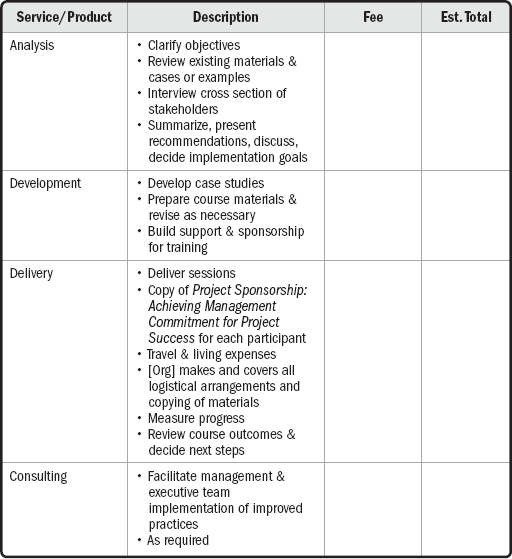
Billing will be handled in the following manner:
- Estimates are approximate and can be adjusted up or down
- Fees for discrete activities such as meetings, books, services will be billed upon delivery or on a monthly basis.
- Minimum billing is half day segments.
- Payments on invoices are due within thirty days.
- An additional fee of 5% applies to amount billed if payment not received within 30 days.
- Cancellation of any activity within 14 days is subject to full charges.
- This quotation is effective for 60 days and may be subject to adjustment after that time.
- Rates may also be subject to change at the beginning of a new fiscal year.
- No further licensing fee will be required for perpetual use of the materials developed by this initiative.
- Englund PMC retains rights to use developed materials in other works.
- Any sensitive or proprietary material may be covered by a non-disclosure agreement.
Chapter 9
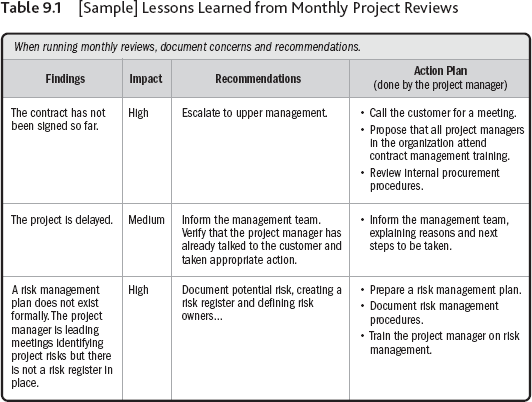
Table 9.2 SWOT Analysis Form
| Strengths | Opportunities |
| Weaknesses | Threats |
Chapter 10
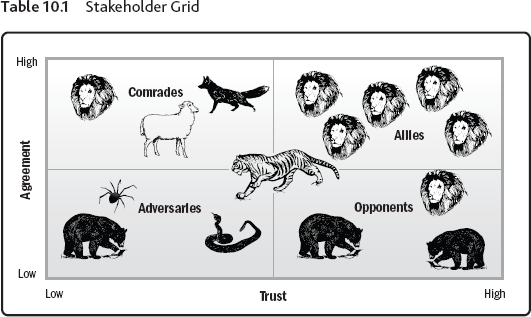
Table 10.2 Sample Political Plan
[Sample] Political Plan
- Assessment of environment
We are a “loose-tight” organization with a moderately weak project culture. Power is relatively diffused and no one person dominates team meetings. People with initiative can step up and succeed but few of these efforts are coordinated across the organization. Ineffective and inefficient processes are a big problem.
- Description of political jungle
The tigers stay out of our way. The lions’ roars are not heard very far, and the bears seem to run the show, doing their own thing. Venomous attacks can come from anywhere, especially when traversing in new territories.
- Stakeholder roles
Sponsors are assigned but do not actively support projects unless asked. Team members lack full commitment to the project because of other distractions. Senior management is just beginning to understand the value of project and program management to the vitality of the organization.
- Potential issues
Too many projects threatens successful completion. Requirements change when managers cater to special interests. Vague understanding of roles and responsibilities creates confusion and leads to missed milestones. Few commitments exist to follow through on project plans.
- Approach to stakeholders and issues
Need to get tigers involved in supporting program management and a project portfolio process. Need to harness the lions to roar in concert by focusing on a limited set of strategic goals and corresponding projects. The bears will continue to perform as long as we do not disturb them too greatly with complex processes or detailed checklists.
- Strategic response, such as positioning and steps
A small project office reporting to the general manager can facilitate the introduction of simple portfolio and project management processes. Get the attention of the lions by pointing out the consequences in the market if we fail to systematically coordinate our efforts. Neutralize negative (venomous) behaviors by an open approach to all issues and the free flow of information.
- Action plans
Interview all stakeholders. Prepare proposal. Line up upper management support. Define the project sponsor role and conduct training for new sponsors. Develop an environment where excellence in project sponsorship contributes to competitive advantage. Select strategic efforts leading first to small wins before rolling out more broadly. Get explicit commitments from all stakeholders. Remember to be authentic and act with integrity in every interaction.
